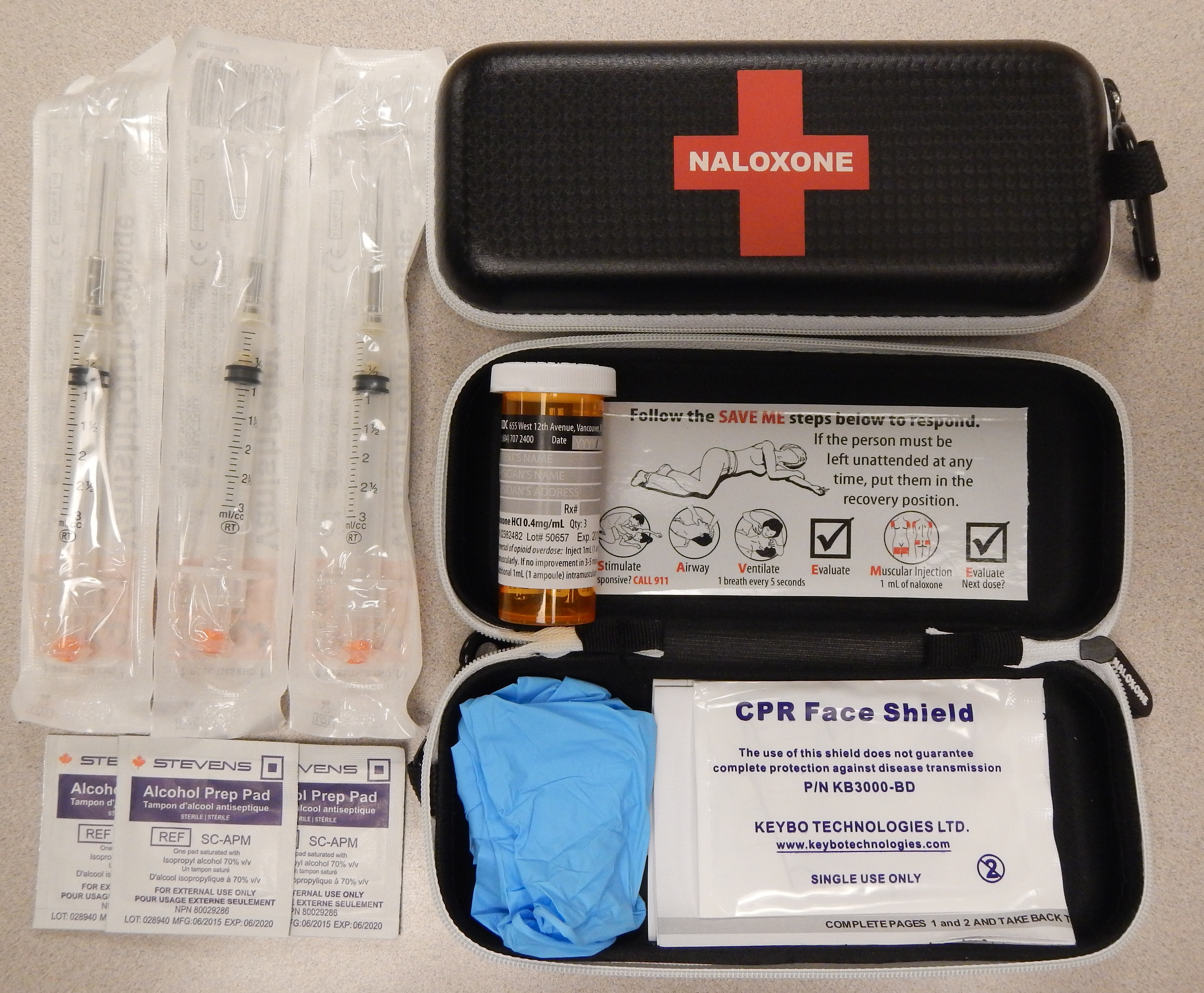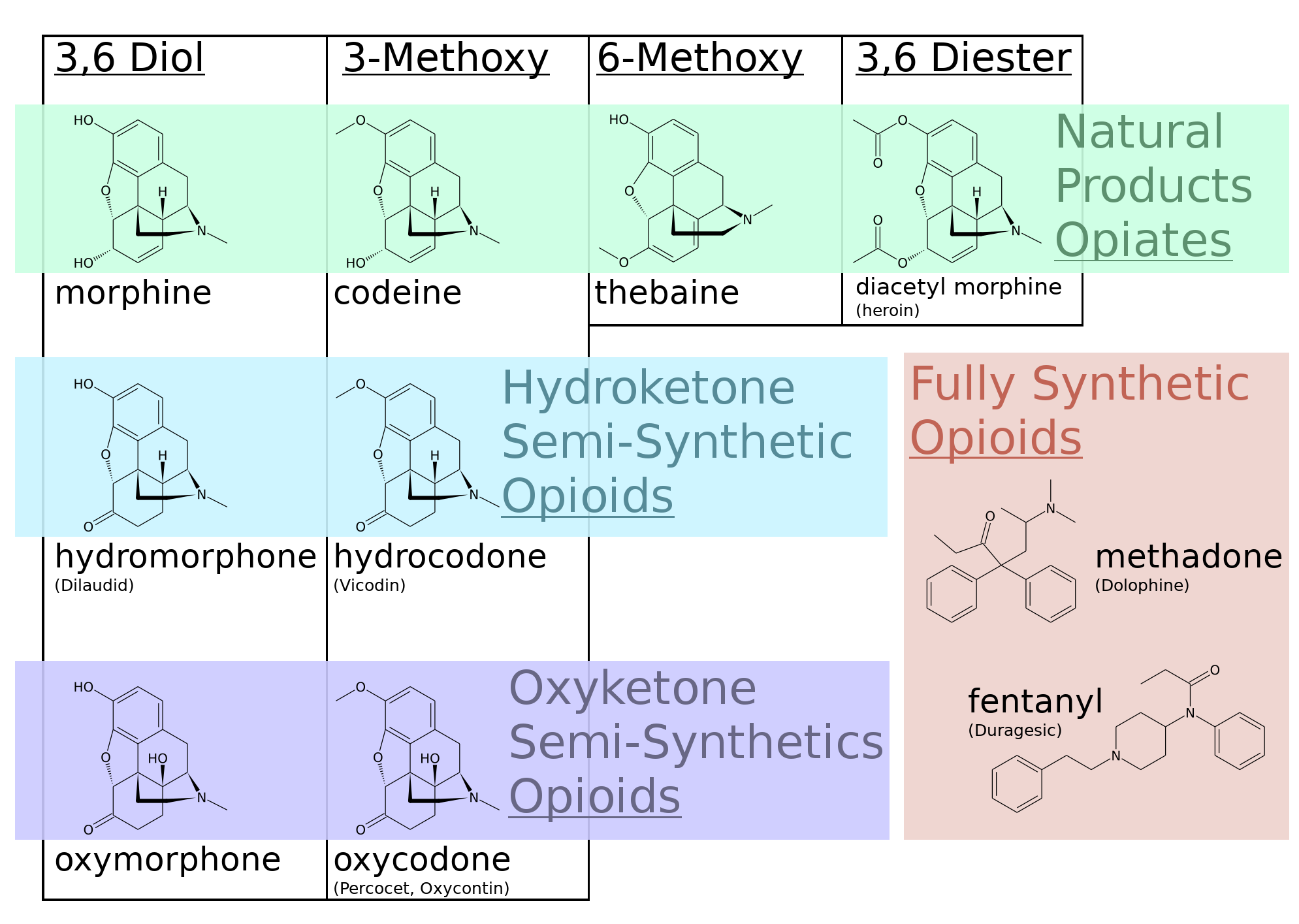|
Take-home Naloxone Program
A take-home naloxone program is a governmental program that provides naloxone drug kits to those that are at risk of an opioid overdose. Naloxone is a medication that was created to reverse opioid overdoses. As an opioid antagonist, it binds to the μ-opioid receptors blocking the opioid's effects. Naloxone quickly restores normal respiration. The ongoing opioid epidemic has caused many public health authorities to expand access to naloxone. History Naloxone was created in a laboratory, patented in 1961, and approved by the FDA a decade later. It was first proposed in the 1990s for community-based provisions of take-home naloxone rescue kits (THN) to opioid users, which involved training opioid users, along with their family or friends, in awareness, emergency management, and administration of naloxone. Police have been carrying naloxone in their squad cars since the mid 2000s. Paramedics have been carrying it since the release, however EMT's have started carrying it since the ear ... [...More Info...] [...Related Items...] OR: [Wikipedia] [Google] [Baidu] |
Naloxone
Naloxone, sold under the brand names Narcan (4 mg) and Kloxxado (8 mg) among others, is a medication used to reverse or reduce the effects of opioids. It is commonly used to counter decreased breathing in opioid overdose. Effects begin within two minutes when given intravenously, and within five minutes when injected into a muscle. The medicine can also be administered by spraying it into a person's nose. Naloxone commonly blocks the effects of opioids for 30 to 90 minutes. Multiple doses may be required, as the duration of action of some opioids is greater than that of naloxone. Administration to opioid-dependent individuals may cause symptoms of opioid withdrawal, including restlessness, agitation, nausea, vomiting, a fast heart rate, and sweating. To prevent this, small doses every few minutes can be given until the desired effect is reached. In those with previous heart disease or taking medications that negatively affect the heart, further heart problems have occurred. ... [...More Info...] [...Related Items...] OR: [Wikipedia] [Google] [Baidu] |
Opioid
Opioids are substances that act on opioid receptors to produce morphine-like effects. Medically they are primarily used for pain relief, including anesthesia. Other medical uses include suppression of diarrhea, replacement therapy for opioid use disorder, reversing opioid overdose, and suppressing cough. Extremely potent opioids such as carfentanil are approved only for veterinary use. Opioids are also frequently used non-medically for their euphoric effects or to prevent withdrawal. Opioids can cause death and have been used for executions in the United States. Side effects of opioids may include itchiness, sedation, nausea, respiratory depression, constipation, and euphoria. Long-term use can cause tolerance, meaning that increased doses are required to achieve the same effect, and physical dependence, meaning that abruptly discontinuing the drug leads to unpleasant withdrawal symptoms. The euphoria attracts recreational use, and frequent, escalating recreational use of ... [...More Info...] [...Related Items...] OR: [Wikipedia] [Google] [Baidu] |
μ-opioid Receptor
The μ-opioid receptors (MOR) are a class of opioid receptors with a high affinity for enkephalins and beta-endorphin, but a low affinity for dynorphins. They are also referred to as μ(''mu'')-opioid peptide (MOP) receptors. The prototypical μ-opioid receptor agonist is morphine, the primary psychoactive alkaloid in opium. It is an inhibitory G-protein coupled receptor that activates the Gi alpha subunit, inhibiting adenylate cyclase activity, lowering cAMP levels. Structure The structure of the μ-opioid receptor has been determined with the antagonist β-FNA, the agonist BU72, and in a complex with DAMGO and Gi protein. Splice variants Three variants of the μ-opioid receptor are well characterized, though RT-PCR has identified up to 10 total splice variants in humans. Location They can exist either presynaptically or postsynaptically depending upon cell types. The μ-opioid receptors exist mostly presynaptically in the periaqueductal gray region, and in the superfi ... [...More Info...] [...Related Items...] OR: [Wikipedia] [Google] [Baidu] |
Opioid Epidemic
The opioid epidemic, also referred to as the opioid crisis, is the rapid increase in the overuse, misuse/abuse, and overdose deaths attributed either in part or in whole to the class of drugs opiates/opioids since the 1990s. It includes the significant medical, social, psychological, and economic consequences of the medical, non-medical, and recreational abuse of these medications. Opioids are a diverse class of moderate to strong painkillers, including oxycodone (commonly sold under the trade names OxyContin and Percocet), hydrocodone (Vicodin, Norco), and fentanyl, which is a very strong painkiller that is synthesized to resemble other opiates such as opium-derived morphine and heroin. The potency and availability of these substances, despite the potential risk of addiction and overdose, have made them popular both as medical treatments and as recreational drugs. Due to the sedative effects of opioids on the respiratory center of the medulla oblongata, opioids in high doses ... [...More Info...] [...Related Items...] OR: [Wikipedia] [Google] [Baidu] |
Naloxone
Naloxone, sold under the brand names Narcan (4 mg) and Kloxxado (8 mg) among others, is a medication used to reverse or reduce the effects of opioids. It is commonly used to counter decreased breathing in opioid overdose. Effects begin within two minutes when given intravenously, and within five minutes when injected into a muscle. The medicine can also be administered by spraying it into a person's nose. Naloxone commonly blocks the effects of opioids for 30 to 90 minutes. Multiple doses may be required, as the duration of action of some opioids is greater than that of naloxone. Administration to opioid-dependent individuals may cause symptoms of opioid withdrawal, including restlessness, agitation, nausea, vomiting, a fast heart rate, and sweating. To prevent this, small doses every few minutes can be given until the desired effect is reached. In those with previous heart disease or taking medications that negatively affect the heart, further heart problems have occurred. ... [...More Info...] [...Related Items...] OR: [Wikipedia] [Google] [Baidu] |
Bradford Hill Criteria
The Bradford Hill criteria, otherwise known as Hill's criteria for causation, are a group of nine principles that can be useful in establishing epidemiologic evidence of a causal relationship between a presumed cause and an observed effect and have been widely used in public health research. They were established in 1965 by the English epidemiologist Sir Austin Bradford Hill. In 1996, Fredricks and Relman remarked on Hill's criteria in their seminal paper on microbial pathogenesis. Definition In 1965, the English statistician Sir Austin Bradford Hill proposed a set of nine criteria to provide epidemiologic evidence of a causal relationship between a presumed cause and an observed effect. (For example, he demonstrated the connection between cigarette smoking and lung cancer.) The list of the criteria is as follows: # Strength (effect size): A small association does not mean that there is not a causal effect, though the larger the association, the more likely that it is causal. # Cons ... [...More Info...] [...Related Items...] OR: [Wikipedia] [Google] [Baidu] |
Drug Rehabilitation
Drug rehabilitation is the process of medical or psychotherapeutic treatment for dependency on psychoactive substances such as alcohol, prescription drugs, and street drugs such as cannabis, cocaine, heroin or amphetamines. The general intent is to enable the patient to confront substance dependence, if present, and stop substance misuse to avoid the psychological, legal, financial, social, and physical consequences that can be caused. Treatment includes medication for depression or other disorders, counseling by experts and sharing of experience with other addicts. Psychological dependency Psychological dependency is addressed in many drug rehabilitation programs by attempting to teach the person new methods of interacting in a drug-free environment. In particular, patients are generally encouraged, or possibly even required, to not associate with peers who still use the addictive substance. Twelve-step programs encourage addicts not only to stop using alcohol or other d ... [...More Info...] [...Related Items...] OR: [Wikipedia] [Google] [Baidu] |
Substance Dependence
Substance dependence, also known as drug dependence, is a biopsychological situation whereby an individual's functionality is dependent on the necessitated re-consumption of a psychoactive substance because of an adaptive state that has developed within the individual from psychoactive substance consumption that results in the experience of withdrawal and that necessitates the re-consumption of the drug. A ''drug addiction'', a distinct concept from substance dependence, is defined as compulsive, out-of-control drug use, despite negative consequences. An ''addictive drug'' is a drug which is both rewarding and reinforcing. ΔFosB, a gene transcription factor, is now known to be a critical component and common factor in the development of virtually all forms of behavioral and drug addictions, but not dependence. The International Classification of Diseases classifies substance dependence as a mental and behavioural disorder. Within the framework of the 4th edition of the ''Diagn ... [...More Info...] [...Related Items...] OR: [Wikipedia] [Google] [Baidu] |




